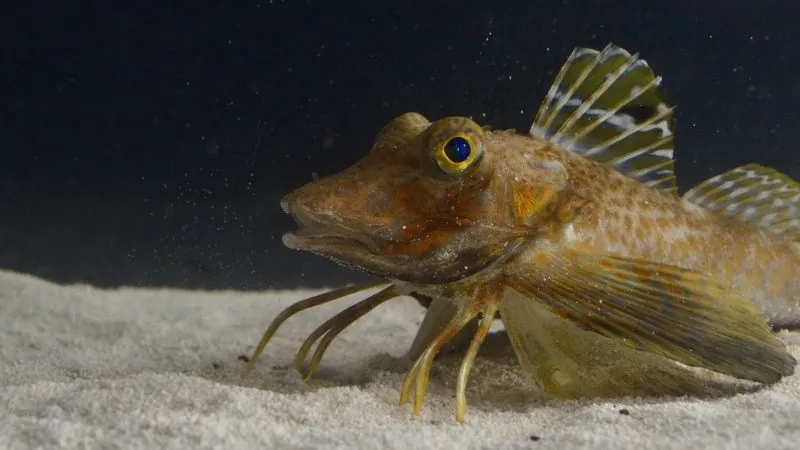
The Bizarre Sea Robin: The Fish That Tastes the Ocean Floor with Its 'Legs'
2024-09-26
Introduction
Prepare to be amazed! A recent groundbreaking study has unveiled the incredible abilities of sea robins—fish that have evolved peculiar leg-like appendages to 'taste' and forage along the ocean bed. Imagine a creature that combines elements of fish, bird, and crab, all in one!
Unique Hunting Skills
These unique fish, which dwell at the bottom of the ocean, use their six sensitive appendages—modified pectoral fins covered in taste buds—to detect prey hidden beneath the seafloor. Researchers found that not only are sea robins skilled hunters, but they have also attracted other fish, eager to feast on the prey that the robins unearth.
Research Insights
In startling research published in Current Biology, David Kingsley from Stanford University's Department of Developmental Biology describes his fascination with sea robins. After first encountering these peculiar fish at a small aquarium in Woods Hole, Massachusetts, Kingsley was struck by their otherworldly appearance: "They had the body of a fish, the wings of a bird, and multiple legs like a crab," he exclaimed. This prompted Kingsley and his team to delve deeper into the species, leading to numerous unexpected findings.
Sensory Capabilities
The results demonstrated that these 'walking' fish have developed specialized sensory capabilities that enable them to taste their surroundings! By alternating between swimming and walking, the researchers observed how effectively the robins can locate food, even without visual cues. In fact, they could unearth ground-up mussel extract, showcasing their remarkable sensory prowess.
Diverse Species
Interestingly, the study revealed there are distinct species among sea robins. The northern sea robin, known scientifically as Prionotus carolinus, has shovel-shaped legs adorned with taste bud-like papillae, while its counterpart, the striped sea robin (Prionotus evolans), lacks these sensory adaptations. Despite appearances, these species diverged roughly 10 to 20 million years ago, indicating that the ability to taste the seafloor may have emerged relatively recently in evolutionary terms.
Evolutionary Insights
But what drives this evolutionary change? The researchers speculate that the adaptation may have allowed these fish to exploit new food sources or that walking could be more energy-efficient than swimming in certain underwater environments. The study identified a critical regulatory gene, tbx3a, which governs the development of these unique appendages—linking their evolutionary path to the genetic makeup that shapes limb development in various species, including humans.
Conclusion
Jason Ramsay from Rhode Island College emphasized that these studies suggest a complex interplay between the evolutionary pressures for walking and sensory adaptation. As new laboratories open at Harvard and the University of Chicago, researchers are eager to continue investigating the mysteries of the sea robin and its adaptations.
So, as you ponder the wonders of marine life, remember the enchanting sea robin—a creature that truly redefines what it means to walk on the ocean floor! Could this fish hold the key to understanding evolution’s unpredictable pathways? The sea is full of surprises, and the sea robin is among the most remarkable.




 Brasil (PT)
Brasil (PT)
 Canada (EN)
Canada (EN)
 Chile (ES)
Chile (ES)
 España (ES)
España (ES)
 France (FR)
France (FR)
 Hong Kong (EN)
Hong Kong (EN)
 Italia (IT)
Italia (IT)
 日本 (JA)
日本 (JA)
 Magyarország (HU)
Magyarország (HU)
 Norge (NO)
Norge (NO)
 Polska (PL)
Polska (PL)
 Schweiz (DE)
Schweiz (DE)
 Singapore (EN)
Singapore (EN)
 Sverige (SV)
Sverige (SV)
 Suomi (FI)
Suomi (FI)
 Türkiye (TR)
Türkiye (TR)